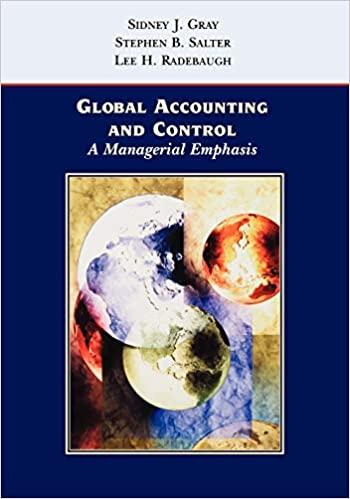Answered step by step
Verified Expert Solution
Question
1 Approved Answer
Caprio Inc. sells $500,000 of 10% bonds on June 1, 2015. The bonds pay interest on December 1 and June 1. The due date of
Caprio Inc. sells $500,000 of 10% bonds on June 1, 2015. The bonds pay interest on December 1 and June 1. The due date of the bonds is June 1, 2020. The bonds yield 8%. On October 1, 2016, Caprio buys back $200,000 of bonds for $210,000 in cash.

Time value of money

Link to excel, thanks
YOU MUST USE A FORMULA OR CELL REFERNCE WHERE POSSIBLE 2 copies of your spreadsheet: one with the answers to the problem and another with all of your formulas. You must turn in both copies to receive credit. "Templates for Time Value of Money" to create in excel a well-labeled amortization schedules and prepare the requested journal entries. Caprio Inc. sells $500,000 of 10% bonds on June 1,2015 . The bonds pay interest on December 1 and June 1 . The due date of the bonds is June 1,2020. The bonds yield 8\%. On October 1,2016, Caprio buys back $200,000 (face value) of bonds for $210,000 in cash (not including accrued interest which was paid separately - also in cash). Provide the following: a. The present value of the bond payable is S on June 1, 2015. Round to the nearest dollar. b. Prepare a well-labeled schedule (with debits/credits shown) for the journal entries through the life of the Bond. c. Give all journal entries for: - 6/1/15 - 12/1/15 - 12/31/15 - 6/1/16 - 10/1/16 Update - 10/1/16 accrued interest payment - 10/1/16 redemption Templates for Time Value of Money Bonds: a) present value; b) entry, c) schedule a) Selling Price: present value single sum of principal + present value annuity of interest payments =principal(pn,yield)+(principalxcouponrate)(Pn,yield) principal = face value = maturity value coupon rate = stated rate = nominal rate market rate = yield = effective rate = internal rate of return, IRR b) Entry: Cash=sellingpriceDiscountonBPorPremiumonBPBondsPayable=facevalue Cash = selling price Discount on BP or Premium on BP Bonds Payable = face value c) Amortization Schedule: Notes Payable: a) present value, b) entry, c) schedule a) Present value = discount all future cash flows at yield = cash equivalent value of what is being financed such as equipment if had paid today with cash and thus had no interest or financing involved b) Entry: Asset = present value (Machine, Land, etc) Discount on Note Pay Note Payable = face value c) Amortization schedule: principal and interest: - Notes Receivable: a) present value, b) entry, c) schedule a) Present Value = discount all future cash flows at yield = cash equivalent value of the value of what is being given in exchange for accepting a note for future payments instead of cash today b) Entry: Note Receivable = face value Discount on Note Receiv Service Rev, etc = value of what given up c) Amortization schedule: Leases: a) present value, b) entry, c) schedule a) Present value = discount all future cash flows at yield = cash equivalent value of asset being financed as if had paid today with cash and thus had no interest or financing involved b) Entry: LeasedAsset=presentvalue Lease Obligation = present value c) Schedule of payments (part going to interest and rest to pay down obligation) while financeStep by Step Solution
There are 3 Steps involved in it
Step: 1

Get Instant Access to Expert-Tailored Solutions
See step-by-step solutions with expert insights and AI powered tools for academic success
Step: 2

Step: 3

Ace Your Homework with AI
Get the answers you need in no time with our AI-driven, step-by-step assistance
Get Started


